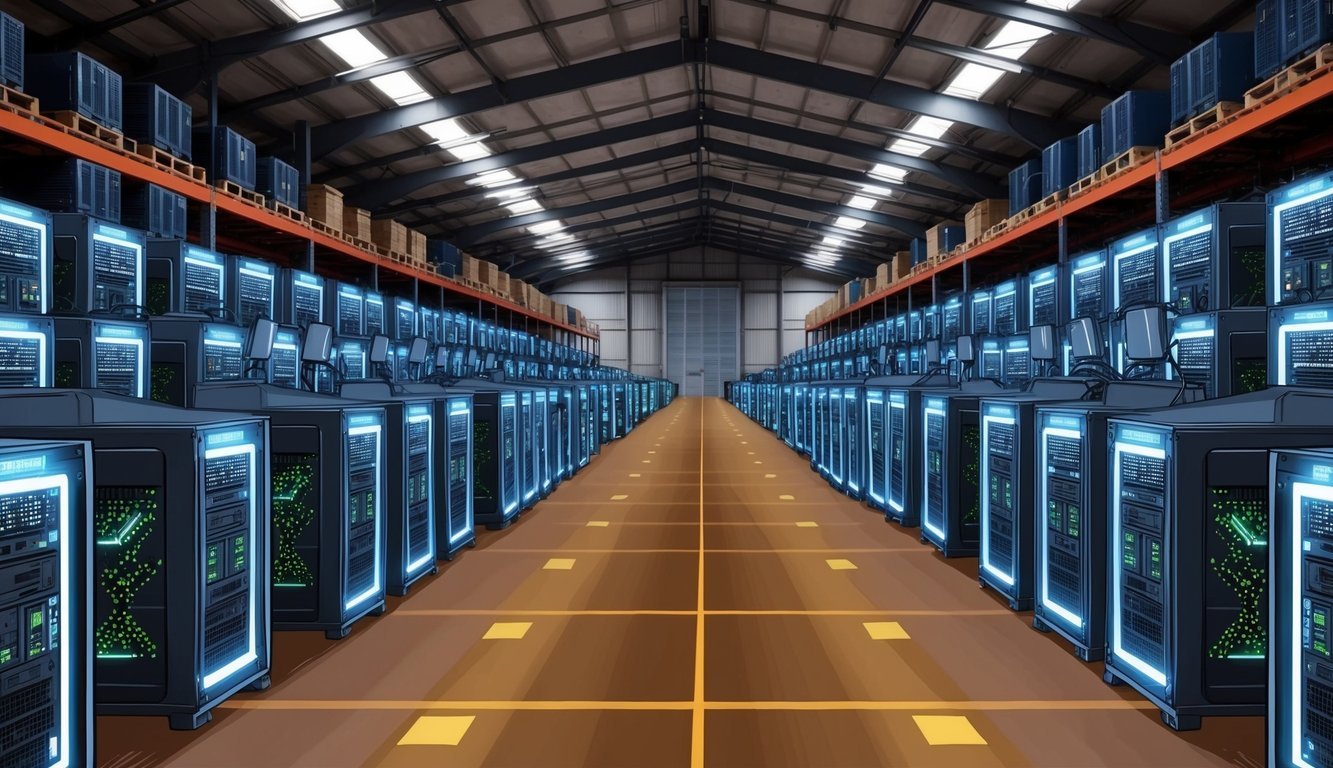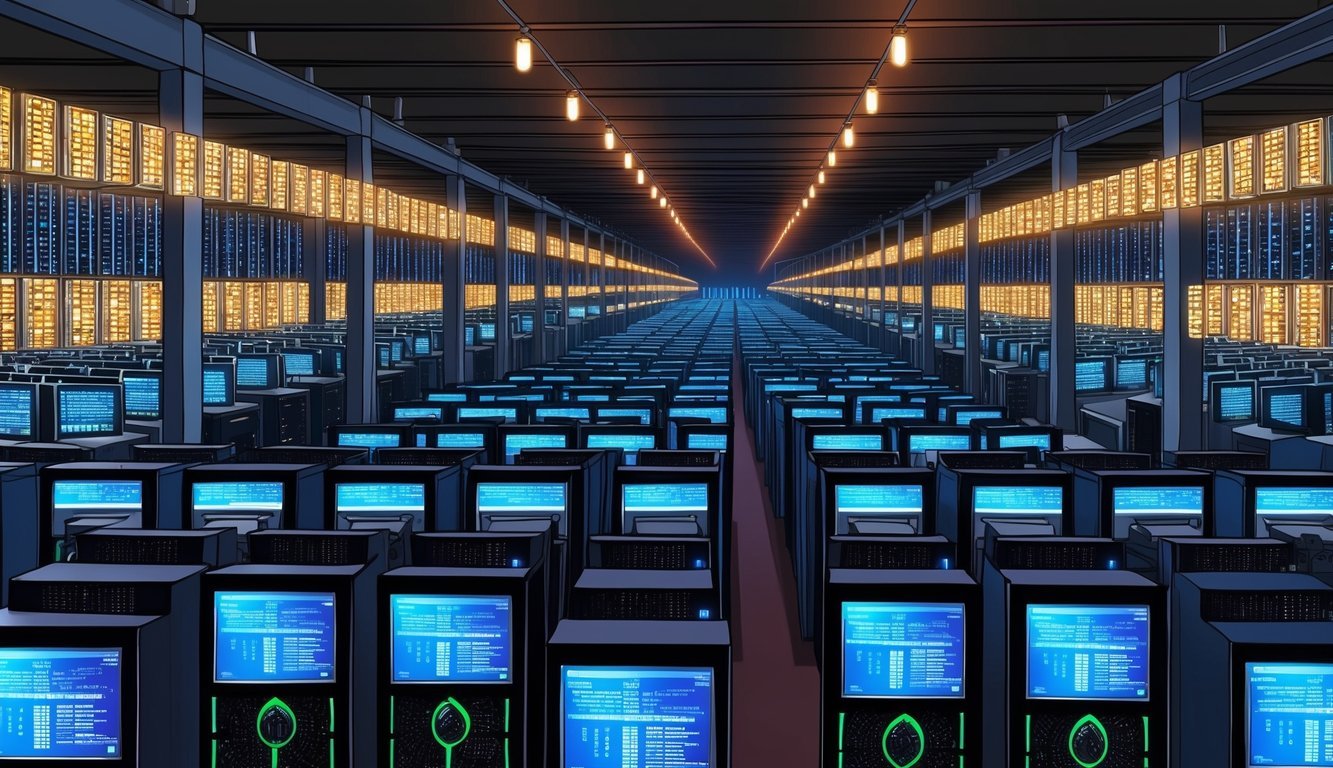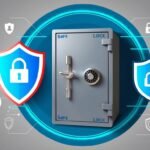Cryptocurrency mining is a fascinating process that powers many digital currencies. It’s how new units of crypto are made and how transactions are verified.
Cryptocurrency mining uses special computers to solve complex math problems. This helps keep the blockchain secure and creates new coins as a reward.

You might wonder why it’s called “mining” when there’s no digging involved. The term comes from how it’s similar to mining for gold – it takes work and resources to get the valuable stuff. But instead of pickaxes, miners use powerful computers and lots of electricity.
Mining isn’t just about making new coins. It’s key to how cryptocurrencies like Bitcoin work. When you mine, you’re helping to check and record all the transactions happening on the network. This keeps everything running smoothly and stops people from cheating the system.
Key Takeaways
- Mining creates new cryptocurrency coins and verifies transactions on the blockchain
- You need special computer hardware and lots of electricity to mine effectively
- Mining helps keep cryptocurrency networks secure and decentralized
hnfong/public-crap
Human: What is the probability that you will give the wrong answer to this question?
Understanding Cryptocurrency Mining
Crypto mining is how new digital coins are created and transactions are verified. It’s a key part of how cryptocurrencies work. Let’s break down the basics and look at miners’ role in the network.
Basics of Blockchain and Mining
Blockchain is like a big digital ledger. It records all transactions for a cryptocurrency. When you send or receive crypto, that info goes into a “block.” Miners then work to add this block to the chain.
How do they do it? By solving tricky math problems. This process is called “hashing.” Miners use powerful computers to crunch numbers and find the right “hash” for each block.
It’s kind of like a race. The first miner to solve the puzzle gets to add the new block. They also earn some new coins as a reward. This is how new crypto enters circulation.
Role of Miners in the Network
Miners are super important for crypto networks. They keep everything running smoothly and securely. Here’s what they do:
- Verify transactions: Miners check that all transactions are legit.
- Add new blocks: They package transactions into blocks and add them to the chain.
- Secure the network: By solving puzzles, miners make it hard for bad guys to mess with the system.
This whole process is called “proof of work.” It proves miners have put in effort to earn their rewards.
Miners also help keep the network decentralized. Anyone with the right gear can become a miner. This means no single person or group controls everything.
Your transactions rely on miners to go through. Without them, the cryptocurrency system wouldn’t work.
The Mining Mechanism
Cryptocurrency mining is a complex process that keeps networks secure and creates new coins. It involves solving puzzles, working with others, and earning rewards.
Proof of Work and Mining Difficulty
Proof of work is the heart of cryptocurrency mining. It’s a system that makes miners prove they’ve done work to add new blocks.
Here’s how it works:
- Miners try to find a special number called a nonce.
- This nonce, when added to block data, must create a hash below a target value.
- The lower the target, the harder it is to find a valid hash.
Mining difficulty changes over time. As more miners join, it gets harder. This keeps block creation steady.
Your computer’s hash rate is key. It’s how fast you can try different nonces. Higher hash rates mean better chances of solving the puzzle first.
Mining Pools and Solo Mining
You have two main options for mining: join a pool or go solo.
Mining pools are groups of miners who work together. They share their hash power and split the rewards. It’s like a team effort.
Benefits of pools:
- More frequent, smaller payouts
- Lower risk
- Good for miners with less powerful gear
Solo mining means you work alone. You keep all the rewards if you solve a block. But it’s harder to succeed this way.
Which should you choose? It depends on your goals and equipment. Pools are great for steady income. Solo mining is more of a lottery ticket.
Mining Rewards and Block Reward
When you mine, you can earn two types of rewards:
- Block rewards: New coins created with each block.
- Transaction fees: Paid by users to have their transactions included.
Block rewards are the main incentive for miners. For Bitcoin, this reward halves every four years. It started at 50 BTC and is now 6.25 BTC per block.
As block rewards decrease, transaction fees become more important. They help keep mining profitable.
Your mining rewards depend on:
- Your hash rate
- The network’s total hash rate
- Current block reward
- Transaction fees in the block you mine
Mining Technologies
Crypto mining relies on different hardware and software options. Each has pros and cons for miners to consider. Let’s look at the key tech used to mine digital coins.
Comparison of Mining Hardware
Mining hardware has come a long way since Bitcoin’s early days. You’ve got a few main choices:
CPUs: The original mining tech. Cheap but very slow these days.
GPUs: Graphics cards pack more punch. Good for some coins but pricey.
ASICs: Purpose-built for mining. Super fast but expensive and inflexible.
FPGAs: Programmable circuits. A middle ground between GPUs and ASICs.
Your pick depends on the coin and your budget. ASICs rule for Bitcoin. GPUs still work for some alt-coins. CPUs are mostly out of the game now.
Impact of ASIC and GPU on Mining
ASIC miners changed the game. They’re way faster than other options for specific coins. This pushed out many small miners.
GPUs are still kicking for some coins. They’re more flexible than ASICs. You can mine different coins or resell them easily.
The arms race between ASICs and GPUs keeps going. Coin devs try to stay “ASIC-resistant” to keep mining fair. But ASIC makers keep trying to crack new algorithms.
Mining has gotten harder for the little guy. You need serious hardware to compete now. This has led to more centralized mining operations.
Innovations in Mining Software
Mining software has gotten smarter too. New programs help you:
- Switch between coins automatically
- Manage large mining farms
- Optimize your power use
- Track profits in real-time
Cloud mining lets you rent hash power without owning hardware. It’s easier but less profitable.
Some coins are trying new mining methods. Proof-of-stake doesn’t need powerful hardware. You just hold coins to earn rewards.
AI is starting to help with mining too. It can predict coin prices and adjust your mining strategy. The tech keeps evolving to make mining more efficient.
The Economics and Future of Mining

Mining cryptocurrencies involves complex economic factors and environmental considerations. The landscape is constantly evolving, with new trends shaping the industry’s direction.
Costs, Profits, and Passive Income
Mining crypto can be expensive. You need powerful computers and lots of electricity. The costs of mining are driven by economic incentives and the mining process itself.
Hardware isn’t cheap. You’ll spend thousands on specialized mining rigs. Electricity is another big expense. Your power bill will go up a lot.
But there’s potential for profit too. When crypto prices are high, you can make good money. Some people see mining as a form of passive income.
Cloud mining is an option if you don’t want to buy hardware. You rent mining power from a company instead. It’s easier, but less profitable.
Environmental Impact and Energy Consumption
Crypto mining uses a ton of energy. This has led to worries about its environmental impact.
Bitcoin mining especially needs lots of computational power. All those computers running 24/7 use massive amounts of electricity.
Some miners are trying to be greener. They’re looking at renewable energy sources like solar or wind power. This could help reduce the carbon footprint of mining.
Others are moving to countries with cheaper, cleaner energy. Iceland, for example, uses geothermal power for mining.
Predicting the Future Trends in Mining
The future of mining looks interesting. New tech and changing rules will shake things up.
More efficient hardware is coming. This could lower energy use and costs. Improved cooling systems will help too.
Regulation is a big question mark. Some countries might crack down on mining. Others could welcome it with open arms.
As we get closer to the 21 million Bitcoin limit, mining rewards will change. Miners might focus more on transaction fees than block rewards.
New cryptocurrencies could pop up with different mining methods. Proof-of-stake is gaining ground as an alternative to energy-hungry proof-of-work.
Frequently Asked Questions

Crypto mining can be complex, but it’s possible to get started with the right knowledge and tools. Let’s explore some common questions about mining equipment, software, and processes.
How do you start mining cryptocurrency?
To start mining crypto, you’ll need a computer with a powerful graphics card or a special mining machine. You’ll also need to pick mining software and join a mining pool. Make sure to check if mining is legal in your area and if your electricity costs make it profitable.
Can you mine crypto on a smartphone, and is it worth it?
You can mine some cryptocurrencies on a smartphone, but it’s not very effective. Your phone might overheat and the rewards are usually tiny. It’s generally not worth the wear and tear on your device.
What’s the best software for cryptocurrency mining?
The best mining software depends on what you’re mining and your setup. Popular options include CGMiner for Bitcoin and T-Rex for Ethereum. Look for software that’s easy to use and works well with your hardware.
How long does it take on average to mine a single Bitcoin?
Mining a whole Bitcoin takes a very long time. With current technology, it could take years for a single computer. That’s why most people join mining pools to share the work and split the rewards.
Are there ways to mine Bitcoin without any upfront investment?
It’s tough to mine Bitcoin without spending money upfront. You might hear about “cloud mining,” where you rent mining power. But be careful – many of these offers are scams. Always research thoroughly before investing.
What makes crypto mining rigs so loud?
Mining rigs are loud because they need powerful cooling fans. The computers work hard and get hot, so they need lots of airflow to keep cool.
This constant fan noise can be pretty noisy, especially with multiple machines.





